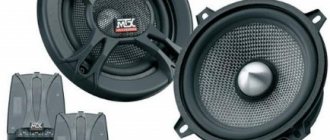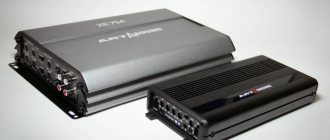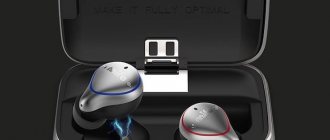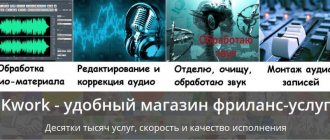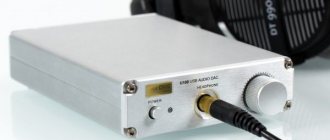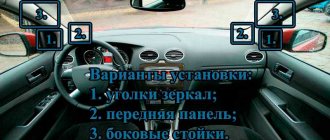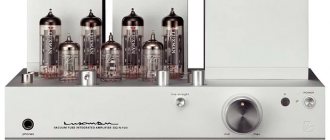Articles
- 2 Topical Technical Review of 25mm Loudspeakers
- 3 A competent choice of acoustics from the “Celestial Empire” for a car
- 4 The most common mistakes motorists make when choosing car acoustics
4.1 Myths and reality
- 4.2 Caution
Car acoustics from China
At this point in time, it is no secret to anyone that Chinese goods have flooded all world markets. At the same time, there is a widespread opinion in society that almost all products from the Middle Kingdom are not of the proper degree of quality.
For example, although Chinese acoustics are cheap, they quickly break down. In reality, things are completely different.
Advantages of modern Chinese acoustics
Acoustics from China
Let's take a closer look at modern Chinese acoustics:
- Products from China are not all the same in quality. They can be of either low or high quality - it all depends on the price of the issue;
- Modern electronics manufacturers from the Middle Kingdom often provide a guarantee for their products to large dealers who purchase products in bulk;
- There is also final product quality control directly from the manufacturer before the product is sent to the customer, which was not the case previously;
- Today, the Chinese goods market has radically changed many of its approaches to production;
- Don’t forget the fact that many brands of electronics are produced in China, and no one has any complaints about this equipment.
Chinese car audio is good
Chinese acoustics are not all uniform in quality and functionality. As mentioned above, everything is determined by the price range. The main advantage of acoustics from there is accessibility and an expanded range of technical capabilities.
Note. Chinese car acoustics are extremely variable, which allows the car owner to make the most optimal choice based on the opportunity/need ratio.
Modern car acoustics from China have a sufficient level of quality, sometimes surpassing even global brands from Japan, the USA and a number of European countries involved in the production of electronics.
Chinese acoustics. Clones.
Those who understand the brands of speaker systems “at a glance” see which brands have been copied.
But there are also original speakers.
As a rule, the Chinese make such speakers using high-quality branded speakers. The Chinese have no problems with branded speakers. Since, basically, they make these speakers themselves. Conditionally, in the next workshop.
We do not particularly recommend buying acoustics in China.
Because she has two problems. The price, especially taking into account delivery, is very decent. But here it should be understood that even in China such products cannot be cheap.
It requires a lot of raw materials and a huge amount of handwork. The cost is higher than that of iPhones. And wages in manufacturing in China are higher than in Russia.
Even empty cases without speakers, filters, or terminals cost crazy amounts of money. Pay special attention to the shipping cost.
The second problem is much more serious. It is not at all clear what will ultimately come to you. You may be lucky, or you may not be at all. Please assess the risks yourself. This article is educational in nature. And it is called upon to tell how it happens and what happens.
Unlike original brands, the price in China for such speakers is 3-5 times lower. In this price group, in any case, you will not receive the quality of “multimedia”, or the well-known top brands of the lower lines.
The risk will likely be specific to a specific store in China. A specific supplier, and a developer unknown to anyone.
The price is about 40 thousand rubles. Link to China
Price is about 65 thousand rubles. Link to China
And indeed, everything was done decently.
Price is about 90 thousand rubles. Link to China
The price is about 80 thousand rubles. Link
Usually Chinese sellers are quite honest in their own way.
So below, photos and videos of acoustics for which they are asking about 100 thousand rubles. The page for this speaker simply does not show what is inside it . But she's not doing well on the inside.
The boxes themselves are not covered with anything. Filters of the “computer multimedia” class. Everything is miniature... tiny wires on cores.
This is a common algorithm for Chinese sellers. If they have something to say and show, they will definitely do it with a dozen pictures . And if it’s better not to speak, they will remain silent.
But let’s be objective, filters of this kind are available in most acoustic systems (up to 50-100 thousand rubles) of top world brands.
Only brands will have capacitors that can be easily electrolytic. This allows filters to be brought to an uncompromising level that was inaccessible to developers from the last century. Cheaper is probably hardly possible anymore.
And the resulting miniature size allows them to be mounted directly on terminals.
It is found in China, in large quantities, frankly “fake” acoustics. Here's an example:
Price is about 95 thousand rubles. Link to China
Below is a video from the person who bought it. A complete mince of everything that can be... the most popular comment on the video is “Buy hemorrhoids on your own head, and say that it’s worth it...”.
We fully agree with this comment. The author of the video apparently got sick of what arrived... He changes and modifies the speakers. At the same time, he’s embarrassed to show what’s inside the speaker..
It conveys the idea that everything is normal and even good. Acoustics for only 55 thousand rubles. and in veneer.
But it is not veneered, and costs almost 100 with delivery.
There are the same ones, but larger and more expensive. For 180 thousand rubles.
Large-sized acoustics. The height is over a meter. Depth 55 cm. Two 10 inch woofers.
And that's what's scary. How it came together in the developer’s head - a powerful expensive speaker and cheap crossover filters for it. This is where discussions arise that are no longer about quality...
But won’t these filters light up (literally) if these speakers are put into disco mode for a couple of hours?
The price is about 200 thousand rubles. Link
Sometimes you come across acoustics and are puzzled by the ratio of quality to its price level:
Price 50 thousand rubles. Link to China
As quality issues begin to disappear regarding the chosen acoustics... A completely different question arises... are they serious? See price and delivery costs:
Only 600 thousand rubles and the acoustics are yours.
Hurry, only 100 pairs left. Link – aliexpress
Topical Technical Review of 25mm Loudspeakers
Let's consider the capabilities of the popular car speaker - BL Aj-650:
- The device frequency is 20-65 Hz;
- noise level – 89 dB;
- 120 W - maximum sound reproduction power;
- The size of the tweeters is 25 mm.
Car speaker –BL Aj904:
- The device frequency is 20-80 Hz;
- noise level – 88 dB;
- 100 W - maximum sound reproduction power;
- The size of the tweeters is 25 mm.
Car speaker – Element AD520:
- The device frequency is 20-80 Hz;
- noise level – 89 dB;
- 120 W - maximum sound reproduction power;
- The size of the tweeters is 25 mm.
A competent choice of acoustics from the Celestial Empire for a car
Step one:
- It is primarily necessary to form your own purchase budget, set clear financial boundaries for minimum and maximum investments, since each motorist has different financial capabilities.
Step two:
- At this stage, you need to make an accurate list of all goods that fit within the previously established financial purchase budget. Naturally, this will take some time, since this procedure cannot be completed instantly.
Note. It is important to cover as wide a range of manufacturers as possible, since the wider the range of choices, the higher the likelihood of purchasing high-quality car acoustics with the proper functionality.
Automotive sound systems
When compiling a product list, it is important to use not only Russian-language Internet resources, but also English-language ones, on which manufacturers from the Middle Kingdom regularly display their products.
Step three:
- Now it’s time to decide on the manufacturer, and for this you need to do some analysis. Determine the prevalence of products in foreign countries, view reviews on the main website of a company that sells car acoustics;
- Particular attention should not be paid to warranty obligations, since if they exist, it will be extremely difficult to claim them due to the location of the company’s central office at a great distance.
Note. Objectively, you need to understand that going to China to return goods under warranty is rather a story from a fairy tale. Moreover, even if you return the products under the guarantee of a European brand (if there is an official representative office of the company in the region in which you live), you will still not be able to get the funds back. In the best case, the damaged device will be repaired in 6-12 months.
Step four:
- This is the last and one of the most important steps, since now it’s time to make the actual purchase of car speakers. It is important to use the services of only trusted online stores. To do this, there are motorist friends who may have previously purchased acoustics from China, or you can look at the site’s reputation.
Note. The first time purchase of goods must always be made by cash on delivery upon receipt of the goods at the post office and after verifying the integrity of the goods. If an online store does not support cash on delivery, then you need to look for an alternative, since such a business entity should not be trusted.
The most common mistakes motorists make when choosing car acoustics
Many car enthusiasts focus their attention too much on the technical capabilities of car acoustics, while forgetting about the importance of the quality of this product. It is worth understanding that the technical parameters declared by the manufacturer do not always correspond to reality.
The quality of sound reproduction of an acoustic device can only be judged when it is turned on and used regularly.
Myths and reality
There are a large number of publications on the Internet devoted to various types of quality tests for acoustic products. In fact, this information belongs to the “myths” category, since to carry out such a check, not only specialized high-tech equipment is needed, but also appropriate, competent, highly qualified specialists.
Chinese speaker factory
Since the story about the acoustics of the Riga radio plant caused burning farts among the remnants of Soviet coders and hysterical cries of “no, I don’t believe you, you’re lying” - let’s see how things are going with our Asian friends. As an example, let’s visit the Chinese electroacoustic factory Edifier, which is quite well-known in narrow circles - nothing special, no high-end, just consumer goods.
Most of our readers think to see something like this:
However, no - this is a photo from the electroacoustic workshop of the Riga Radio Plant in the early 2000s. The level of technology is obvious, it seems to me. However, several years ago this workshop also burned down, and recently the last building of the plant was demolished. Forget it.
But let's return to the Chinese. The Edifier company has existed since 1996, but it has never behaved harshly or aggressively on the Russian market. And so it turned out that almost everyone in Russia has encountered Edifier speaker systems, but not everyone knows about the real origin of the company’s products.
The company is headed by Mr. Wen Dong, who created Edifier shortly after graduating from college. In addition to him, the company is run by Phil Jones and Anthony Wilkinson. I would like to mention Peter Duminy separately, but we have not communicated.
The Edifier plant is located in the city of Dongguan, which is about a hundred kilometers from Shenzhen. The territory of the plant extends over considerable distances, and it looks very neat and well-groomed. We were told that Edifier has invested a lot of money in the development of green technologies both at the plant and on site. Therefore, there is neatly trimmed grass and many trees everywhere. A very pleasant feature of Chinese factories is the design of the front entrance to the complex. In the case of Edifier, this is a beautiful stella and a giant fountain with powerful AAD concert speakers. Yes, yes - AAD is them too.
Phil is a big fan of concert acoustics, and in the next room we were shown concert systems from the AAD brand:
This is the “analogue of Marshall”, hahahaha, with a good combination of price and quality.
But let's go to the factory. The work is based on the conveyor method, but much is assembled and checked manually. Automation, of course, is present to the fullest possible extent, but for a full-cycle plant (and this is what the Edifier plant is considered to be), human participation is necessary at all stages of production, although most often to control the quality of work of robotic installations. There is a connection here with the fact that Chinese tax incentives do not allow the full use of robots in production. For each such “robot” the state will have to pay a lot.
They make the speakers themselves, of course.
Automatic Coil Making Machine
Stand for measuring dynamic loads of a diffuser. This stand allows you to monitor changes in the structure of the diffuser material in real time and, among other things, makes it possible to predict the time of column failure.
Now let’s talk about what amazed absolutely everyone and made us joke furiously about Edifier. Pay attention to the photo below. What do you see?
Looks like a huge blue container that collects?... The container collects dust from all over the plant. Dust occurs at almost all stages of product creation and something needs to be done with it. So they came up with the idea that dust can be... sold.
At the Edifier plant, you can immediately feel the value of dust; just look at how the air purification and ventilation system is implemented. It’s easier to say that special air hoses and ventilation turbines are installed in almost all workshops. All of them, which transfer all the small waste into these very blue bins. And then the dust is sold to another factory, which can make something else out of it.
Inspired by such an interesting business (can you imagine how much dust is wasted in Russia?) we went further to the most harmful (as we were warned) workshop for milling and assembling expensive cases. In this workshop, panels for speaker housings are assembled and covered with film. And again with little use of technology, mostly all by hand.
But this model of speakers will never go to Russia, although it is a definite hit in Europe:
"Horns" Edifier, popular in Europe and unknown in Russia
I like “Horns” because they look great in any interior and seriously improve the quality of traditional television sound. A little later we also listened to them and unanimously decided that “yes,” it sounds great.
And finally, the biggest pride of the Edifier plant. An anechoic chamber for many, many hundreds of thousands of dollars. The largest in China and slightly smaller than the similar one in Germany. The cell doesn't even have a floor as such. Instead, a special mesh of steel cables is stretched:
A special mannequin listens to the acoustics in this chamber:
The mannequin is equipped with special sensors, is very expensive and allows engineers to assess the degree of impact of sound on the user. An ideal solution for sound stage testing and similar tasks.
We were then taken to listen to a short presentation by Anthony Wilkinson. The speaker did not just talk, but expected a response, asked questions and listened carefully to the answers. He was mainly interested in why people in Russia have such a bad attitude towards plastic cases and how to explain to people that not everything that “sounds good” is made of wood. Almost everyone had an answer to this question. And first of all, the factor of the “mysterious Russian soul” played a role. This is when you roll your eyes at the ceiling, sigh and try to explain to an Englishman that wood is better than plastic, but at the moment of lengthy reasoning you yourself finally understand the whole comedy of the situation - in speakers for 50 bucks, this doesn’t seem to make anyone any better. Anthony listened to us all, and then took out the Edifier prototype, a new portable speaker with a built-in player, from his pocket and turned it on...
The small speaker suddenly began to play with a noticeable reserve of power; it even seemed that there was some discrepancy between the size and sound. “Who will say that plastic is worse than wood? A?" - Anthony asked. And there’s no arguing that he really plays well.
At such moments you understand that frequency response graphs, disputes about the quality of materials, or multi-page evidence that A is worse than B are somehow unimportant. You have just been given the opportunity to evaluate the real result of the work of Chinese and British engineers. Try to argue that the frequency response there is bad. Experts will understand you, and an ordinary consumer, hearing such a sound, will not argue, but will go and buy. Simply because this solution is good and he sincerely doesn’t care about technical details.
In the evening we had dinner right in the hotel restaurant and I was lucky enough to listen and talk with people who, in general, can afford any life they like. But they are so dedicated to music and acoustics that even one hour of communication with Phil and Anthony leaves a deep impression on everyone.
Imagine that Phil Jones is now busy creating a concert acoustic system, where one speaker will cost more than 150 thousand dollars. “I’m almost done,” says Phil and shows his iPhone, where among a bunch of photographs of houses, children, dogs and trees flashes frames of a giant speaker, which he will show everyone this year. And then, without the slightest irritation, he answered questions from people he was seeing for the first time. He answered with such feeling that I tried to translate not only all the words, but also the emotions that he put into his phrases. It was not in vain that we went.
PS. I didn’t focus too much on this, but I’ll remind you again. The fact is that there are a lot of people in China. And all these people must be busy with something, otherwise they will suddenly dislike Mao’s ideas and want “freedom.” The Chinese people will win their freedom without any problems, so the development of modern Chinese society is very interesting to observe from the outside. Almost nothing we see when we arrive there in any way makes us think that China is “the birthplace of despotism and totalitarianism.” Quite the contrary, the central streets are clean, the metro is modern, houses are constantly being built and do not stand empty. There is food all around. Those. When you travel around the country, all kinds of food grow naturally all around you. From rice to bananas. Something is grazing, flying and running everywhere. This is not the case in cities, but as soon as you get out of the village, you immediately see agricultural fields around you. One and a half billion Chinese want to eat - and they know how to grow what they will eat tomorrow.
Now let's look at the factories. The use of physical labor is justified, since for this the Chinese worker receives real money. The Chinese go to factories to work for serious money - to earn money for a wedding, for a house, for a car. Those who don’t want to exert themselves sit in the villages and kick the bulldozer. Production is harmful in some places, but installing robots is a very expensive procedure that requires not only skill, but also a serious investment of dough on the part of the owner, since the robot “steals” Chinese jobs, and for this the Chinese worker must receive constant compensation. This is precisely the reason for the widespread spread of manual labor in factories.
These citizens work - turn out the lights, this now only remains in China, and, perhaps, in South Korea. Clearly, harmoniously and quickly. And no mistakes - a mistake is a marriage, and a marriage is a penalty. No one will put you in a corner, stupidly won’t give you money or kick you out of work.
P.P.S. Who needs desktops with built-in amplifiers - pay attention to the Edifier R2800 (aka Edifier Studio 8).
They are not cheap (about 18 grand per pair) and weigh 23 kilograms, but they sound good and do not require an amplifier or DAC. A smart solution for professional audio-video editing.
The power amplifiers are built on two TAS5342LA microcircuits - four-channel class D amplifiers, which in a bridge connection are capable of delivering up to 100 W into a 4 Ohm load, and in single-ended mode - up to 40 W into a 3 Ohm load. In this case, both connection options are used: four channels out of eight (in two microcircuits) are combined in pairs into bridge amplifiers that drive LF speakers, and the remaining four serve midrange and HF speakers. Naturally, all crossover filters that divide the frequency band into three speakers are active.
The switching and pre-processing circuits are the same as in the R2700: STM8L152 microcontroller, TAS5508C PWM, HCF4052 analog switch and PCM1808 ADC. There are three inputs - analog (tulips) and two digital - coaxial and optical.
The sound in the lower midrange is well developed. The bass reflex in the R2800 is designed well, and there is no shortage of low frequencies. FI does not cause any overtones or additional resonances. Real coverage in the lower region starts from 45–50 Hz.
For my taste, the Edifier R2800 sounds much better than a system based on Yamaha components for the money . The highlight is significant, because for the same money it is unrealistic to assemble an equally good-sounding system with a brand-name amplifier. There are only a few good three-way active systems on the market.
